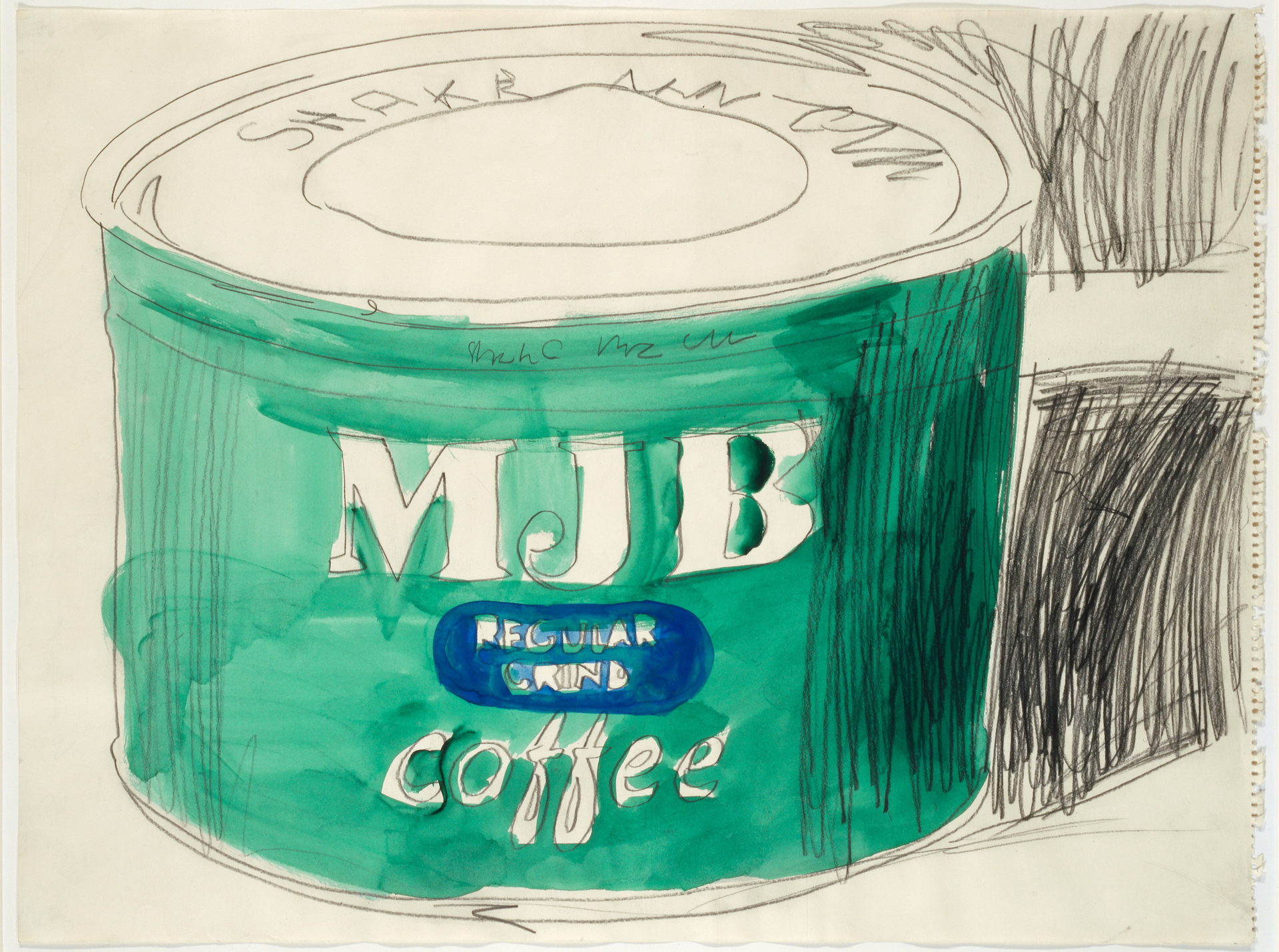Andy Warhol. The Early Sixties
Paintings and Drawings 1961-1964
In the early 1960s, after a successful career as a commercial artist, Andy Warhol decided to devote himself to the fine arts. Even so, consumerism and the media-oriented nature of mass production continued to be the main thrust of his work. The exhibition highlights the artist’s seminal years from 1961 to 1964. It was then that Warhol made the transition, step by step, from an individual visual idiom to mediatized, collective visual material and, along with it, to mechanized production. In consequence, he called into question the very foundations of artistic categories in the age of modernism. The exhibition is the first ever to explicitly address this transitional period in Warhol’s oeuvre, demonstrated, for example, by the fact that in 1962 Warhol painted more than one variation on the same picture.
One version may show traces of the gestural and expressive painting process while another – though still painted by hand – already shows the diagrammatic reduction and coolness of his later work. In selected groups of work, viewers can study his approach to silkscreening on a monochromatic ground. Paintings or drawings of Campbell´s Soup Cans and Dollar Bills are especially indicative of the scope of his work from the gestural beginnings to repetitive series of prints. The exhibition culminates in the famous Star series of Elvis and Liz, a gallery of Death & Disaster and the first Flowers series of 1964.
Some 70 paintings and drawings will be on view, including major works from the holdings of the Kunstmuseum Basel and the Kupferstichkabinett.

